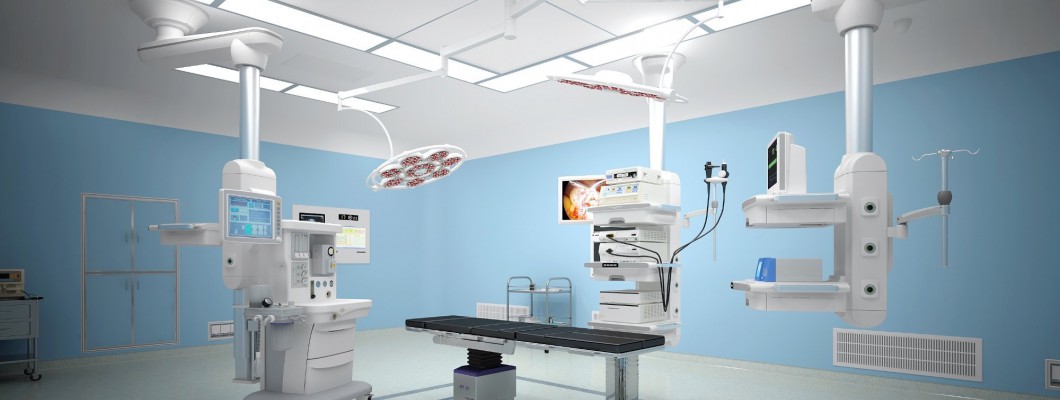15 Sep


An operating theater (OT) is equipped with a variety of specialized tools and equipment to facilitate surgical procedures. Here’s a comprehensive list of common equipment found in an OT room:
1. Surgical Tables
- Adjustable tables for positioning patients during surgery.
2. Surgical Lights
- High-intensity, adjustable lights to illuminate the surgical field.
3. Anesthesia Machines
- Devices used to deliver anesthesia and monitor patients’ vital signs during surgery.
4. Electrosurgical Units (ESUs)
- Equipment used for cutting and coagulating tissue using high-frequency electrical currents.
5. Suction Machines
- Devices for removing fluids, blood, and debris from the surgical area.
6. Monitoring Equipment
- Includes heart rate monitors, blood pressure monitors, and pulse oximeters to track patients’ vital signs.
7. Instrument Trays
- Trays designed to hold and organize surgical instruments for easy access.
8. Basin Sets
- Basins for holding sterile solutions, irrigation fluids, or collecting specimens.
9. Scalpel and Surgical Instruments
- Various tools such as scalpels, scissors, forceps, and clamps used in surgical procedures.
10. Sterilization Equipment
- Autoclaves and other devices used for sterilizing surgical instruments and supplies.
11. Cautery Pens
- Handheld devices used to cut tissue and stop bleeding during surgery.
12. Trocars and Cannulas
- Instruments used for creating access points into the body for laparoscopic surgery.
13. Surgical Drapes
- Sterile covers used to maintain a clean surgical field and protect surrounding areas.
14. Waste Disposal Containers
- Containers for the safe disposal of medical waste, including sharps and biohazard materials.
15. Surgical Sponges and Gauze
- Materials used to absorb blood and other fluids during surgery.
16. Patient Positioning Devices
- Tools like wedges, straps, and cushions to ensure proper positioning of patients.
17. IV Pumps and Infusion Devices
- Equipment for administering fluids, medications, and nutrients during surgery.
18. Radiological Equipment
- Portable X-ray machines or fluoroscopy units for imaging during surgical procedures.
19. Emergency Equipment
- Crash carts with essential supplies for managing medical emergencies, including defibrillators and airway management tools.
20. Communication Systems
- Intercoms or headsets for communication among the surgical team during procedures.
Conclusion
The equipment in an OT room is critical for ensuring safe and efficient surgical procedures. Proper selection, maintenance, and usage of this equipment are essential for achieving positive patient outcomes and maintaining a sterile environment.
